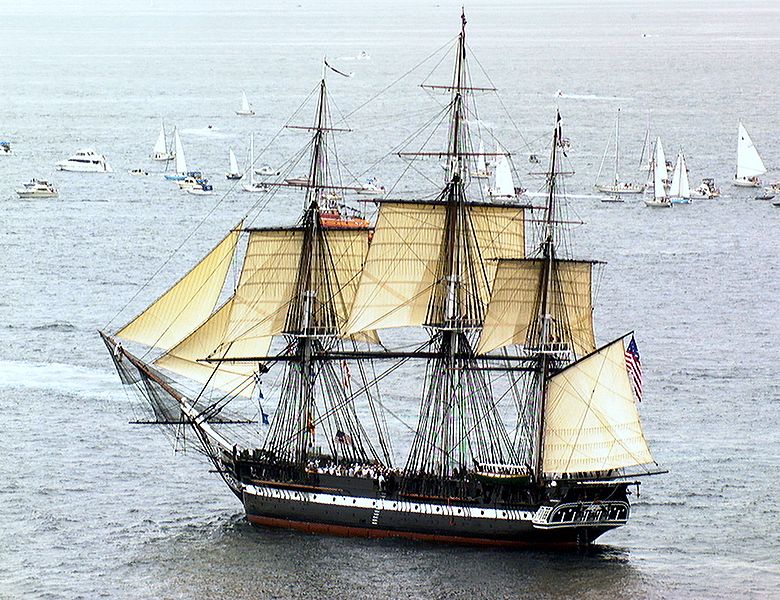|
|
The frigates in the navies were auxiliary warships, smaller than the
Ships of The Line, and used as messengers (using flag signals) and patrol ships. Today their role would be that of a cruiser.
The term "frigate" had various meaning during the eras:
the ancient term, before 1650, was used for a Mediterranian, Arabic-Algerian rowed ship, having 2 lateen masts, like a galley
The Spanish and Italian "fregata" in the 17th century was a small coastal vessel that had no role in a Navy.
The English 5th Rate in the 18th century was also called a "frigate" in the Royal Navy.
The American of the 19th century "super frigates" were a combination of a small European frigate hull layout (no raised forecastle or poop deck)
and the size of a Ship of a Line.
The modern frigate in the 20th century is a specialized ship in armament, e.g. for submarine chasing, in a rank below a destroyer.
The famous sailing frigates between 1650 and 1850 usually had only 1 gun deck, and some guns on the flush weather deck. With a small "interruption"
of the invention of paddle wheel driven frigates, limiting the number of guns, the propeller driven frigates (yet as an auxiliary propulsion to sails)
again were characterized by having 1 full gun deck.
But is was not only their reduced weight that made them fast, and not only their longer hull design, they also had the most advanced
rigging of their time to provide speed, and so they could have even more
sails than a heavy, slow Ship of The Line:
-
Bowsprit: 2-5 fore triangular staysails [staysail, jib, outer jib, flying jib], sprit yards without sails
-
Fore Mast: 3-5 square sails [course, topsail, topgallant sail, royal sail, skysail], auxiliary stunsails on each side of each yard
-
2-4 main quadrangular staysails, rarely used
-
Main Mast: 3-5 square sails [course, topsail, topgallant sail, royal sail, skysail], auxiliary stunsails on each side of each yard
-
1-4 mizzen quadrangular staysails, rarely used
-
Mizzen Mast: lateen mizzen, or later, the quadrangular "spanker" mizzen, and 2-4 square sails [topsail, topgallant sail, royal sail, skysail],
very rarely auxiliary stunsails on each side of each yard (douptful)
- NOTE: sky sails, the fifth, uppest yards on these masts, were not standard but
used very rarely, "flying" with a minimal running rigging, just a halyard and sheets.
NOTE: In 1800, the dangers of overmasting and overarming were painfully tested. In the early years of the US Navy, that did not have the experience of the matured
European navies, the USS Constellation, a smaller sister ship to the USS Constitution under Captain Truxtun engaged and captured the French frigate
L´Insurgente; but during that battle, it became clear that the heavy 24 pounder gun armament of the Constellation was a threat
not only to the enemy ... the ship heeled heavily and the high masts were useful in calm weather only.
Also in January 1800, the sister ship
of the USS Constitution, the USS Congress was dismasted completely not by an enemy ship, but by a storm shortly after leaving Newport.
Keeping the shrouds and backstays neither too tight nor too slack is most important to keep all spars up, other wise the rigging
breaks due to fatigue fracture.
|
